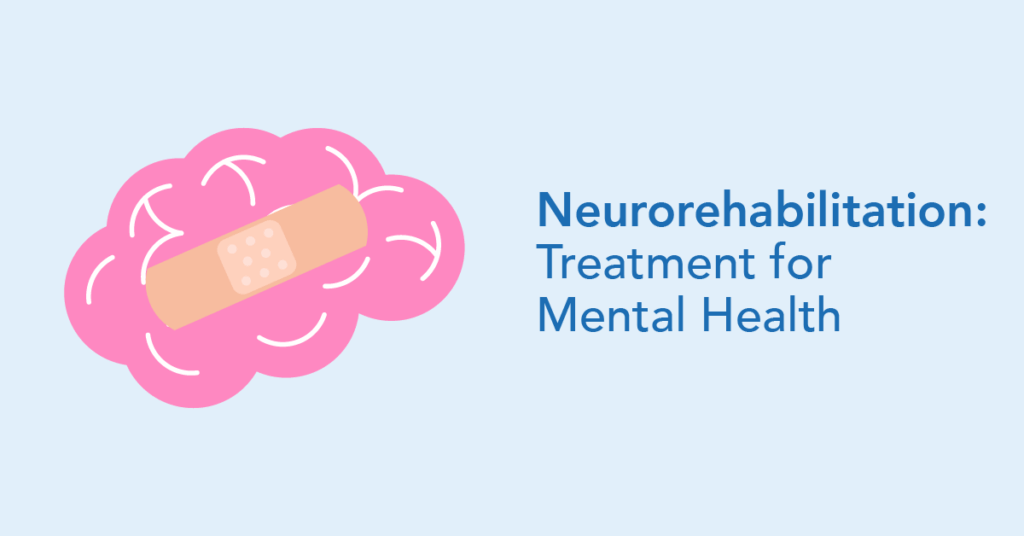Neurorehabilitation is a form of treatment used in a variety of health care settings, including rehabilitating stroke victims, those with brain or spinal cord injuries and those living with degenerative disorders. Neurotherapy can help restore and improve the functioning of the brain and nervous system, and it can help improve an individual’s mental health.
In this guide, we explore neurorehabilitation in detail, discussing what sort of conditions it can help treat, how it’s performed and how it can be used alongside traditional mental health care.
What Is Neurorehabilitation?
Neurorehabilitation is a complex program that involves a combination of therapies and interventions. The program is tailored to the individual based on their condition and symptoms and reviewed regularly to ensure it’s addressing the challenges the patient faces. Neurorehabilitation may involve working with caregivers or close family members so the individual receives the support they need in their day-to-day life, giving them the best possible chances of recovery.
Brain-Based Conditions It Can Help Treat
Neurorehabilitation therapy can help people who are experiencing a variety of neurological conditions and injuries, including:
- Strokes
- Brain injuries
- Spinal cord injuries
- Parkinson’s disease
- Multiple sclerosis
- Traumatic brain injury
- Neurodevelopmental conditions
- Neurodegenerative disorders
- Some mental health conditions
These therapies help people who are struggling with cognitive difficulties improve their cognitive abilities and develop coping strategies to handle the challenges they’re facing. The treatments are tailored to the individual’s needs to help them achieve independence in as many areas of their lives as possible. Every year, around 795,000 people in the United States suffer a stroke, and around half of all stroke survivors aged 65 or older are left with reduced mobility. For those individuals, neurotherapy is an invaluable part of recovery.
Techniques Used in Neurotherapy
Neurotherapy treatments come in a variety of forms.
- Cognitive Training
Brain training or cognitive training practices are often used to help slow cognitive decline in patients living with the effects of dementia. It can also be used to help individuals struggling with attention deficit disorder improve their focus and attention. Some researchers have found that cognitive training may also help reduce the symptoms of major depressive disorder. - Neurofeedback
This treatment involves measuring the individual’s brainwaves using an electroencephalogram, then providing a reward if the brain is performing the “right” action. For example, during the treatment, if the EEG shows the patient is relaxed, they might be allowed to listen to their favorite song. Over time, this trains the brain to behave in a specific way.
Neurofeedback is helpful in the treatment of anxiety and depression, as well as ADD and attention-deficit/hyperactivity disorder. It’s often used to treat individuals who have treatment-resistant depression, and many patients who find cognitive training and traditional medications unhelpful respond well to neurofeedback. - Functional Electrical Stimulation
FES helps individuals recover functional ability following a neurological injury. This treatment method applies an electrical current to the target muscles and can help restore some strength and mobility to the desired area. For example, some people with brain injuries find they develop a “dropped foot” and are unable to pull their toes back to a normal walking position. FES helps encourage a proper foot position, strengthening the muscles over time and helping the individual walk better unaided. - Serial Casting
By using a series of padded casts, each differently sized, it’s possible to help increase the range of movement and muscle length. Serial casting is often used as a treatment for people who have neurological conditions such as multiple sclerosis or cerebral palsy. It can also help people recover a normal range of movement and improve their flexibility following a stroke.
Each cast is worn for approximately a week. It’s then removed and switched for a different cast, increasing the stretch until the desired range of motion is achieved. - Physical Therapies
Individuals who’ve lost strength and mobility after a brain injury may receive a variety of forms of physical therapy to help them rebuild the sensory and motor pathways required for day-to-day movements and motor control. An example of this is the Bobath concept, which encourages normal movement patterns and promotes good posture while discouraging compensatory movements.
Integrating Brain Retraining With Traditional Mental Health Care
Brain retraining works due to a concept known as neuroplasticity. Repeatedly thinking in a specific way or doing certain things helps build new brain pathways, and by encouraging and reinforcing those pathways, the actions or thoughts associated with them become normal and intuitive.
This works with cognitive training, neurofeedback and physical therapies to treat weakness and loss of movement. With the right treatments, even people who’ve lost significant mobility due to a stroke or traumatic brain injury have a chance of regaining some independence, improving their physical and mental health.
Who’s a Good Candidate for Neurotherapy?
Neurotherapy treatments can be used for a variety of conditions, including anxiety, depression, obsessive-compulsive disorder and ADHD/ADD. It can also be used to help people with stroke symptoms, tinnitus, insomnia and memory loss. Some early trials have found it can help with the effects of traumatic brain injury. There are even people using neurotherapy as a training tool to help athletes and high-performing professionals perform better in their roles.
Mental Health Hotline Helps You Get the Support You Need
If you’re struggling with anxiety, depression or other mental health difficulties, the Mental Health Hotline is here to help you. We understand that life can be challenging, especially for people who’ve experienced debilitating illness or injury. If you’re looking for support in your area, our counselors are here to provide a listening ear and point you in the direction of support options in your local area. Reach out today; we’re with you every step of the way.

